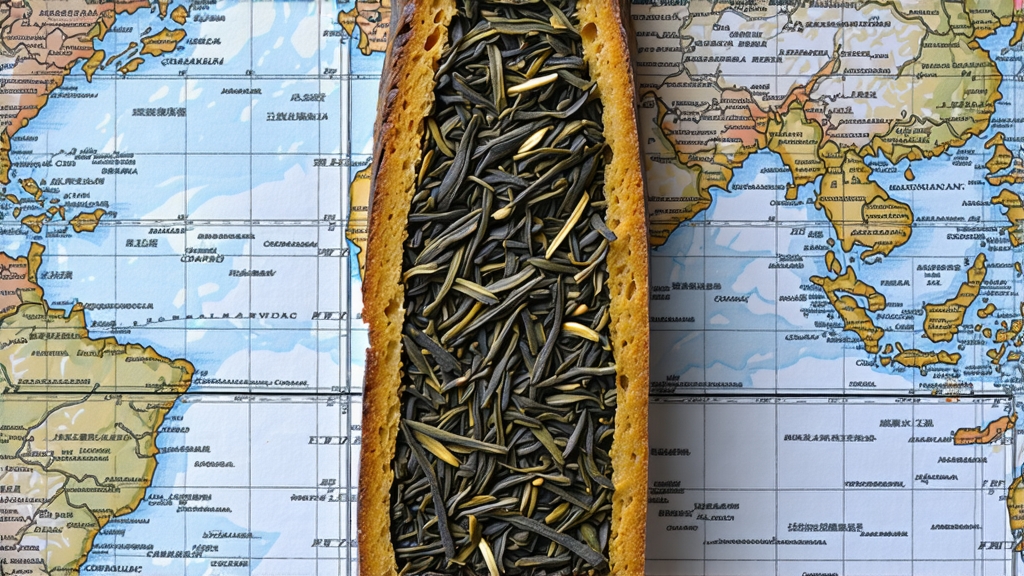
When British tea lovers speak of “black tea” they mean the fully oxidised leaf that yields a coppery cup, but in China the word hei cha—literally “black tea”—belongs to another universe of flavour altogether. Among the half-dozen classic hei cha, none is more physically imposing, more historically romantic, or more stubbornly slow to reveal its secrets than the Qianliang brick from the highlands of Hunan province. Weighing in at exactly 1,000 old Chinese liang (about 36.25 kg), the original Qianliang brick is the largest compressed tea ever to travel the Ming-Qing caravan roads. Today, smaller 2–5 kg “mini-Qianliang” bricks and 50 g discs allow every kitchen shelf to harbour a slice of that same gravitas. This article invites the international reader to meet the giant: to understand how it was born, how it is made, how it ages, and how to coax its mellow, sweet, almost whisky-like soul into a modern glass or clay pot.
-
From Warhorse Rations to Silk-Road Currency
The story begins in the 16th century, when the Ming court exchanged Hunan tea for Mongolian warhorses along the northwestern frontier. Loose leaf was too bulky for the 3,000-mile trek, so tea merchants near the Zijiang River steamed, piled, and pressed the leaf into long, narrow logs wrapped in bamboo husks—an early ancestor of Qianliang. By the Qing dynasty the brick had standardised to 1,000 liang, and caravans of coolies balanced the 70-cm cylinders in litters, two men per side, marching from Anhua county to Xi’an and thence to Lhasa, Bukhara and even Petersburg. Russian customs records of 1837 list “Tchay Kirpich 1000 Lian” at 28 silver roubles apiece—proof that the brick had become a commodity money whose value increased with age and distance from Hunan’s humid barns. -
Terroir: The Misty Banks of the Zijiang
Anhua county lies where the Wuling Mountains funnel cool mist into a narrow valley carved by the Zijiang tributary. The fog slows photosynthesis, thickens leaf cuticles, and concentrates the very polyphenols that later mutate into the mellow pigments and woody aromatics prized in aged dark tea. Local cultivars—Yun Tai Da Ye, Bai Hao Zao, and the newly selected Anhua Cha Qun—bear leaves wider than a woman’s palm and stems as long as a tea needle, ideal for the long fermentation road ahead. Soil is slightly acidic granite leached with bamboo litter; elevation 300–800 m; annual rainfall 1,700 mm. The same micro-climate that once hid bandits now hides gardens whose spring picking can sell for more than silver-tip white tea. -
Craft: How a Green Leaf Becomes a Black Boulder
Step 1: Picking
Only one standard is accepted: “one bud with three or four leaves, 8–10 cm long, soft as silk but strong enough to tie into a knot.” Picking starts at Qingming and ends before Grain Rain, yielding 45 days of raw material.
Step 2: Withering
Leaves are spread 5 cm deep on bamboo racks in drafty lofts for 6–8 h until they lose 15 % moisture and the grassy note subsides.
Step 3: Fixing (Kill-green)
A brief 3-min roast at 280 °C in a 1 m diameter wok deactivates enzymes but deliberately leaves more moisture than green-tea practice; this residual water is the starter culture for step 5.
Step 4: Rolling
The hot leaf is immediately rolled for 45 min under 50 kg granite blocks. Heavy pressure ruptures cells and releases the juices that will glue the brick together months later.
Step 5: Piling (Wo Dui)
The hallmark of all hei cha. The rolled leaf is heaped 1 m high, covered with wet cotton, and left to ferment for 12–15 days. Internal temperature climbs to 55 °C, turning the pile into a microbial concert hall where Aspergillus niger, Blastobotrys adeninivorans and a lactic acid consortium convert catechins into theaflavins, theabrownins and rare gallic esters that